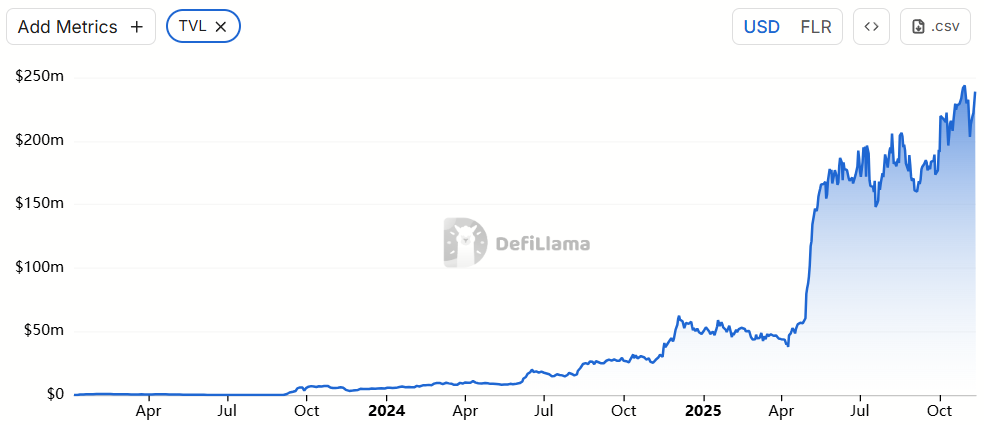One of cryptos oldest communities may finally get a modern DeFi primitive: liquid staking. Firelight, a protocol designed to bring liquid staking for XRP, is preparing to launch on Flare by the end of November, positioning XRP holders to unlock collateral and yield strategies that the XRP Ledger hasnt natively offered.
What changes for XRP holders
Firelight plans to let users lock XRP and receive a transferable stXRP derivative to deploy across Flares DeFi stack. While there have been ways to bring representations of XRP onto Flare, the assets were typically locked and not capital efficient. A liquid token flips that equation, enabling lending, liquidity provision, and structured strategies without forfeiting staking rewards.
Relative scale matters: the XRP Ledger holds about $83.5 million in TVL today, while Flares total sits roughly 2.4x higher. A credible liquid staking token could redirect flows and experimentation toward Flare, particularly from holders seeking yield without leaving the XRP orbit.
Liquidity backdrop: Flares TVL heads back to highs
Flares mainnet went live in July 2022. After notching a TVL peak of $208.9 million on Oct. 30, the network cooled to roughly $174 million in early November before rebounding. As of press time, TVL is hovering near $203 million, according to DefiLlama.

Part of the late-October momentum coincided with asset manager Teucrium filing with the U.S. Securities and Exchange Commission for a potential exchange-traded fund referencing Flares FLR. While filings can spark speculative interest, approval for token-specific ETFs beyond Bitcoin and Ethereum remains a high bar in todays regulatory climate. Still, the headline drew attention to the ecosystem just as DeFi activity began to stir.
Under the hood: how Firelight fits
Firelights stated aim is to deploy capital in a way that meets institutional risk standards while being secured by XRP staking. If delivered, that framing could matter for allocators that require clearer risk tooling before interacting with on-chain yield. The protocols stXRP design also aligns with a broader market shift toward liquid staking tokens as base collateral across DeFi.
Key considerations for participants will include smart contract security, redemption mechanics for stXRP, and secondary market liquidity each a determinant of whether a liquid staking token trades tightly around its intended value.
The bridge effect: Xaman Wallets role
Connectivity is set to improve as well. Xaman Wallet, slated for a December release, will let XRP Ledger users initiate transactions on Flare without moving assets off XRPL, according to the team. The pitch: bridge liquidity and yield between the networks while keeping users anchored to their preferred ledger.
Why this matters
- Capital efficiency for XRP: A liquid staking token could transform idle XRP into productive collateral across lending and liquidity venues.
- Network gravity: If stXRP gains traction, Flare becomes a natural hub for XRP-centric DeFi strategies, potentially reinforcing its TVL and app ecosystem.
- ETF headline risk vs. tailwind: The Teucrium filing is not a green light, but it amplifies visibility for FLR and Flare-based activity.
- Market structure: Liquid staking has become a core DeFi building block on other chains. Bringing it to XRP aligns that community with a dominant on-chain yield narrative.
Market context and competitive landscape
Liquid staking adoption often rises with clear pathways to utility. For Ethereum, stETH catalyzed a cascade of integrations; for XRP, the test will be whether stXRP can achieve comparable composability on Flare. Competing narratives include restaking and cross-chain yield strategies, which could complement or fragment liquidity depending on integrations and incentives.
Numbers to watch
- TVL momentum on Flare relative to XRPLs ~$83.5 million baseline
- Depth and spreads for stXRP trading pairs post-launch
- Protocol integrations that accept stXRP as collateral
- User adoption via Firelight and wallet tooling like Xaman
Timeline
Firelight targets a Flare mainnet debut by the end of November, with Xamans functionality expected later in December. If execution aligns with these timelines, Flares rising TVL may have fresh fuel heading into year-end.
